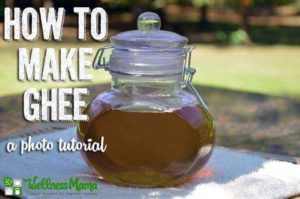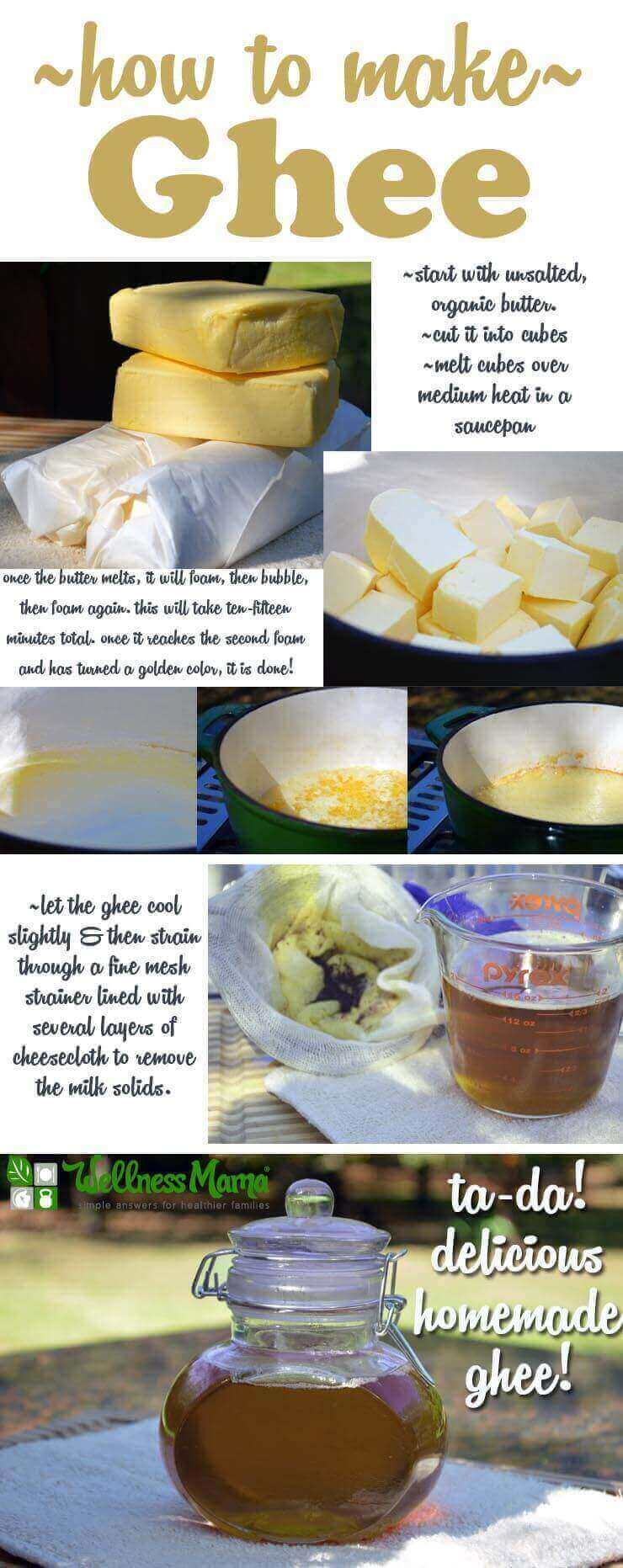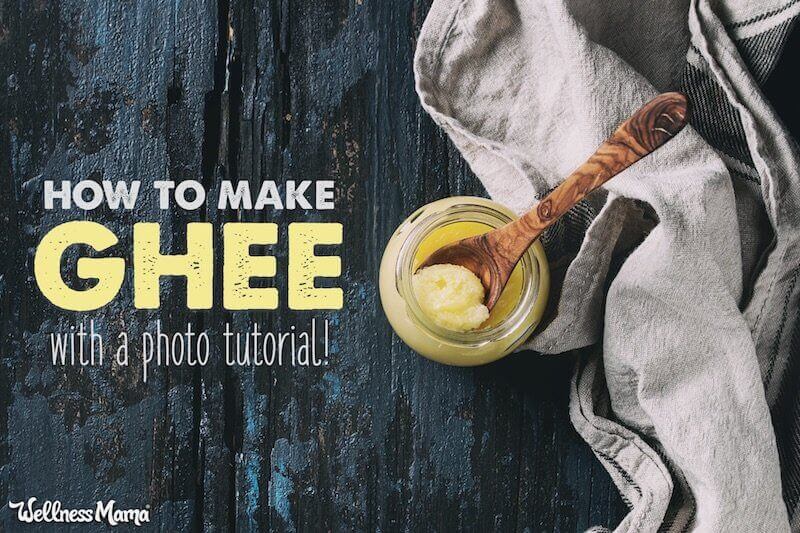Ever used ghee? It has the benefits of butter without the casein and proteins that some people react to in butter. so it’s basically the best of both worlds!
What Is Ghee?
In technical terms, ghee is a clarified, unsalted butter with the milk proteins removed. It has a high smoke point, making it perfect for cooking, and an incredible flavor. Many people who cannot tolerate dairy can handle ghee and it is a revered food in Indian cuisine.
The Benefits of Ghee
I’m a big believer that traditional cultures knew things about food that science is still catching up to, and ghee is one of these foods! From fermenting sauerkraut to soaking nuts and seed to release their phytic acid, learning how to make traditional foods is an important step when it comes to improving nutrition and gut health.
Ghee is considered “liquid gold” and very important in Indian culture (and has been for centuries). When made from high quality butter from grass fed cows, it is a great source of fat soluble vitamins like vitamin K and is great for teeth, hair, skin, and nails.
How Does it Taste?

Let’s be honest… ghee is like butter on crack! It has more intense flavor and more nutrients, so a little bit goes a really long way. The flavor is great in many different recipes and dishes and you can use it pretty much as you would butter.
If you’re buying store-bought, I do find the flavor really varies by brand and definitely recommend this one over all others just based on flavor.
How to Use Ghee
I like using ghee for making stir frys in a wok since it has such a high smoke point. Also, with wok cooking, only a tiny amount of ghee is needed. Ghee is also incredible on a baked sweet potato, in eggs, or on steamed or roasted vegetables.
Ghee is expensive to buy, but simple to make, so this is one traditional food I keep in our meal prep rotation. Unlike butter, it does not need to be refrigerated and is softer for spreading when kept at room temperature. This makes it great for traveling or packing for the beach or camping.
If you’ve never tried it, I highly suggest making ghee and trying it in your cooking, especially if you are sensitive to dairy!

Homemade Ghee Recipe
Servings
Ingredients
- 1 pound butter preferably unsalted, organic, and grass-fed
Instructions
- Cut the butter into cubes and place in a medium-size saucepan.
- Heat the butter over medium heat until completely melted.
- Reduce to a simmer.
- Cook for about 10-15 minutes. During this time, the butter will go through several stages. It will foam, then bubble, then seem to almost stop bubbling and then foam again. When the second foam occurs, the ghee is done. At this point, the melted butter should be bright gold in color and there should be reddish-brown pieces of milk solids at the bottom of the pan.
- Let the ghee cool slightly for 2-3 minutes and then slowly pour through a wire mesh strainer lined with several layers of cheesecloth. The small bits of milk protein are usually discarded, though a friend told me that her grandmother used to mix those with flour (or almond flour) and a small amount of honey to make a flavorful fudge-like treat.
Nutrition
Notes
- Ghee will last up to a month at room temperature or even longer in the fridge.
- I use this brand when I don’t have time to make homemade.
If you’re a visual learner, here’s a photo walk-through of all the steps to make it.

Ever made ghee at home? Ever tried it? Share your experience below!


Leave a Reply